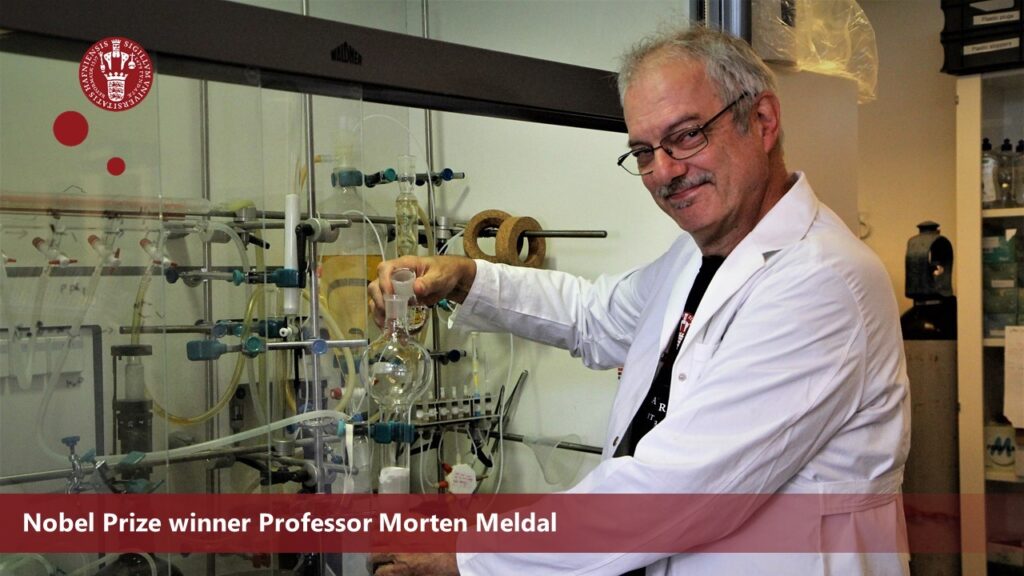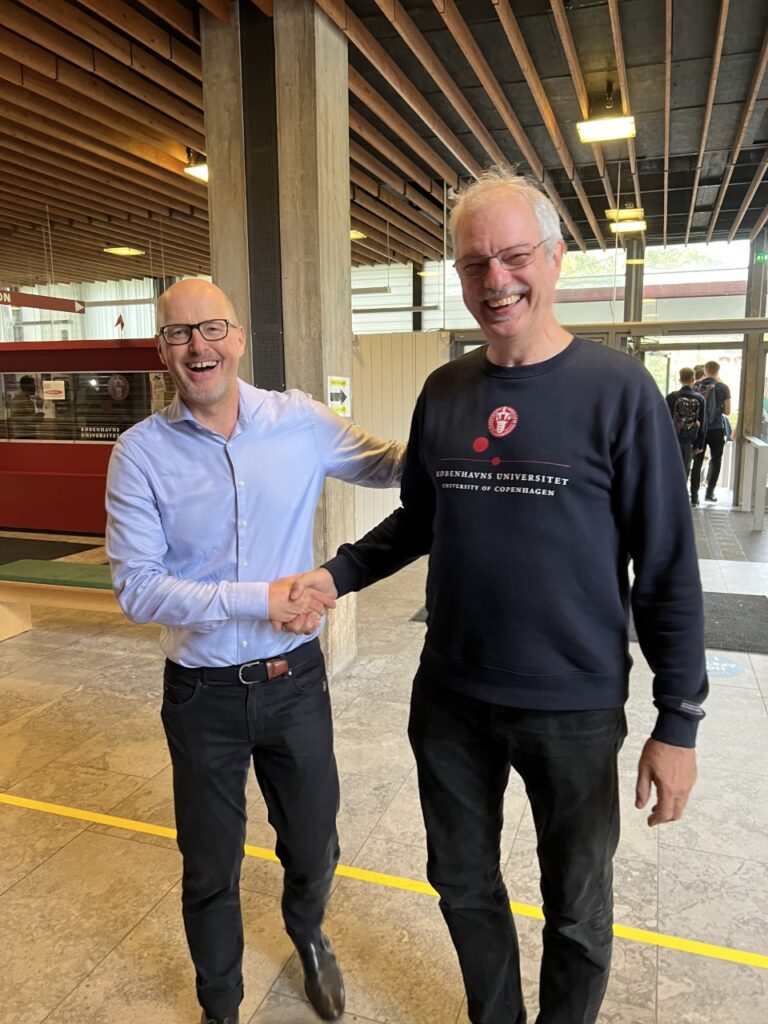
The Nobel Committee for Chemistry has awarded the 2022 Nobel Prize in Chemistry jointly to Carolyn R. Bertozzi, Morten Meldal, K. Barry Sharpless “for the development of click chemistry and biorthogonal chemistry”! Congratulations to all three! I would also like to congratulate Morten Meldal’s former PhD student Christian W. Tornøe who contributed much to Morten’s early work in this field.
Morten Meldal is a very well recognized member of the international peptide community. He has received some of the most prestigious awards in peptide science, including the Vincent du Vigneaud Award by the American Peptide Society in 2011, the Ralph F. Hirschmann Award by the American Chemical Society in 2009, and the Leonidas Zervas Award by the European Peptide Society in 1996. He also co-organized the 31st European Peptide Symposium in Copenhagen in 2010, together with Thomas Hoeg-Jensen and myself.
Morten was born in Denmark in 1954 and studied chemical engineering at the Technical University of Denmark, where he received his M.Sc. degree in 1981. Morten then worked on his PhD thesis in carbohydrate chemistry under the supervision of Associate Professor Klaus Bock. Morten stayed at DTU for a postdoc, until he moved to the MRC Laboratory of Molecular Biology to work with Robert C. Sheppard [1] (1932-2019) on new methods for Fmoc-solid phase peptide synthesis (SPPS). This was a key step in Morten’s transition towards peptide science. There he worked with Eric Atherton, John D. Wade, Alex Eberle and other peptide scientists who would go on to have distinguished careers on their own. Morten’s research included the use of Dhbt-OH as a new auxiliary nucleophile for amide bond formation in Fmoc-SPPS.
Morten returned to Denmark in 1986, this time to the Department of Chemistry at the University of Copenhagen. Here he established a strong, independent research program centered around Fmoc-SPPS, in collaboration with Associate Professor Arne Holm. When Klaus Bock became Head of the Chemistry Department (in Danish, Kemisk Afdeling) at the Carlsberg Laboratory, he asked Morten to establish his research group there.
On a personal note, I should add that in 1988 I had just started on my MSc project the University of Copenhagen under Morten’s supervision. Morten kindly asked me to move to the Carlsberg Laboratory with him. I became his first PhD student at the Carlsberg Laboratory. My PhD project centered around new methods for glycopeptide synthesis by SPPS.
Morten stayed at the Carlsberg Laboratory until 2011. At the Carlsberg Laboratory at that time, Morten had excellent and very supporting conditions for his research. With no teaching obligations, good funding, and with Klaus Bock to manage the department and later also the Carlsberg Research Center, Morten could focus on his science. At the Carlsberg Laboratory, Morten eventually established his Center for Solid Phase Organic Combinatorial Chemistry, where he and his coworkers developed an automated instrument for SPPS, the PEGA resin, assays for analysis of protease activity, to mention just a few. As a student there in 1988-1992, I can testify to that this was a very stimulating and productive scientific environment. At the Carlsberg Laboratory I worked next to Morten in the laboratory. Morten is a very skilled experimentalist, and it was a great experience to learn from him.
Morten’s research focused on new methods for SPPS, catalysis and enzymology, molecular recognition, polymer chemistry, as well as peptide and protein chemistry in general. He then turned his attention to combinatorial chemistry, in particular one-bead-one-compound libraries and many variations of this concept.

Morten’s most impactful research was together with his then PhD student Christian W. Tornøe. They developed the Cu(I) catalyzed regiospecific formation of 1,2,3-triazoles by cycloaddition of terminal alkynes and azides [2]. The reaction that we now know under the acronym, CuAAC, was specifically developed for use with peptides and carbohydrates. This highly selective and highly efficient reaction is now an essential tool in many disciplines. Alkyne-azide couplings and other highly efficient and orthogonal reactions have clearly changed chemistry, biochemistry, and many other areas of research.
In 2011 Morten accepted an offer to move to the Department of Chemistry, University of Copenhagen in 2011, shortly after the 31st European Peptide Symposium in Copenhagen. Morten became director of the Nano-Science Center at the University of Copenhagen, until the University of Copenhagen funded his Center for Evolutionary Chemical Biology in 2013. Here he continued and expanded his research on new synthetic methodologies and screening strategies of biologically active molecules. This included the Cu(I) catalyzed alkyne-azide coupling of two protein fragments to form an active enzyme (termed split-click protein chemistry) [3]. Key collaborators there were Frederik Diness and Sanne Schoffelen.
Privately, Morten is married to Phaedria Marie St. Hilaire. They have a son who has just started studying chemistry at the University of Copenhagen. In addition, Morten has a daughter from a previous marriage. Morten enjoys many things in life, in particular playing music on one of his guitars, which he builds himself, or on drums.
On a personal note, the Department of Chemistry holds an annual event, called ‘Nobel Crystal Ball’, where selected professors are asked to predict who would win a Nobel Prize in Chemistry. Back in 2014, I predicted that Morten Meldal was a strong candidate for a Nobel prize [4]. My colleagues were mildly bemused at that time.

Contributed by Knud J. Jensen
- J.D. Wade, J.H. Jones, The life and work of Robert (Bob) C. Sheppard, J. Pept. Sci., 27, e3369, 2021. doi: 10.1002/psc.3369.
- C. W. Tornøe, C. Christensen, M. Meldal, J. Org. Chem., 2002, 67, 3057-3064.
- C. Kofoed, S. Riesenberg, J. Smolikova, M. Meldal, S. Schoffelen, Bioconjugate Chem., 2019, 30, 1169-1174.
- https://lnkd.in/e2xHykUx
